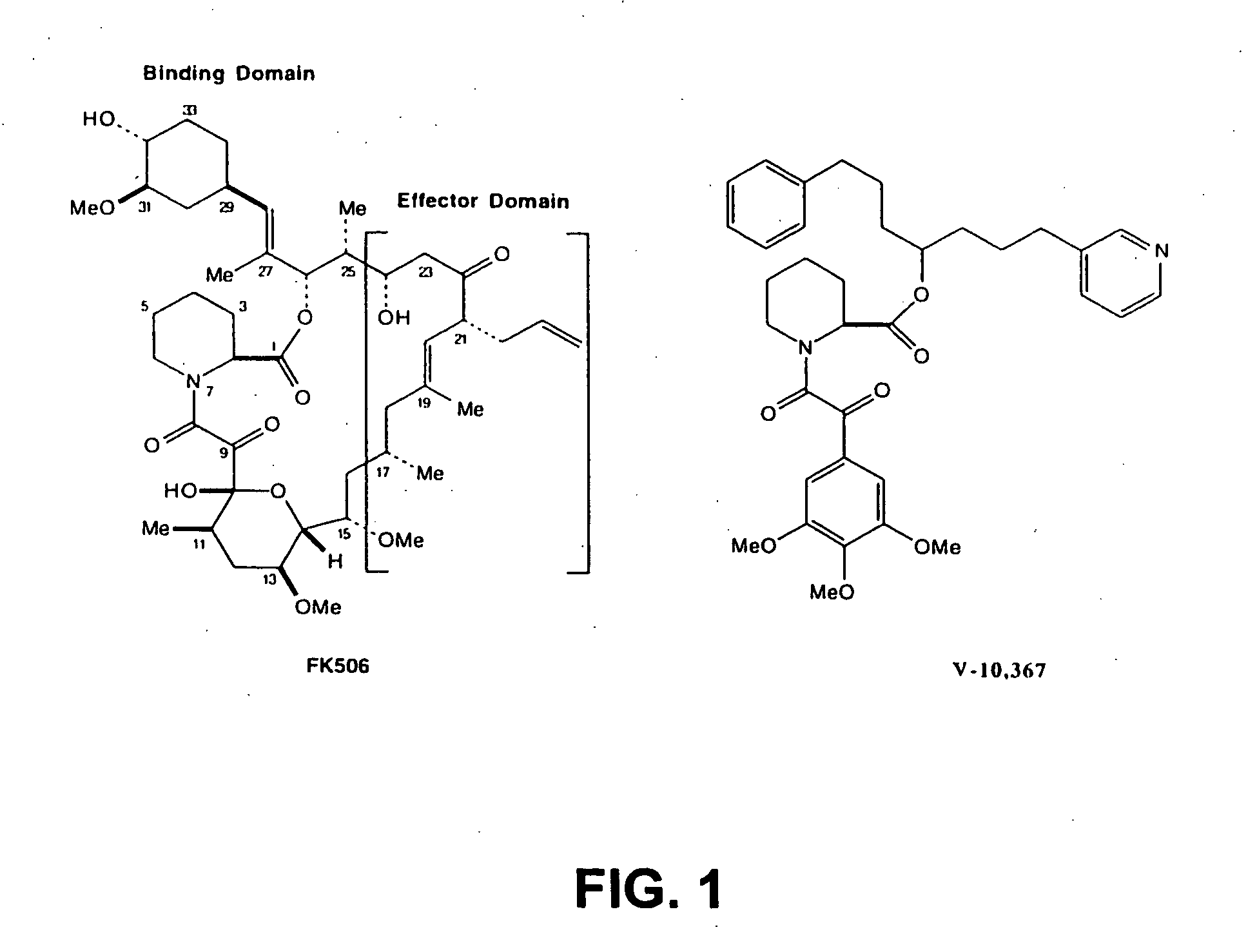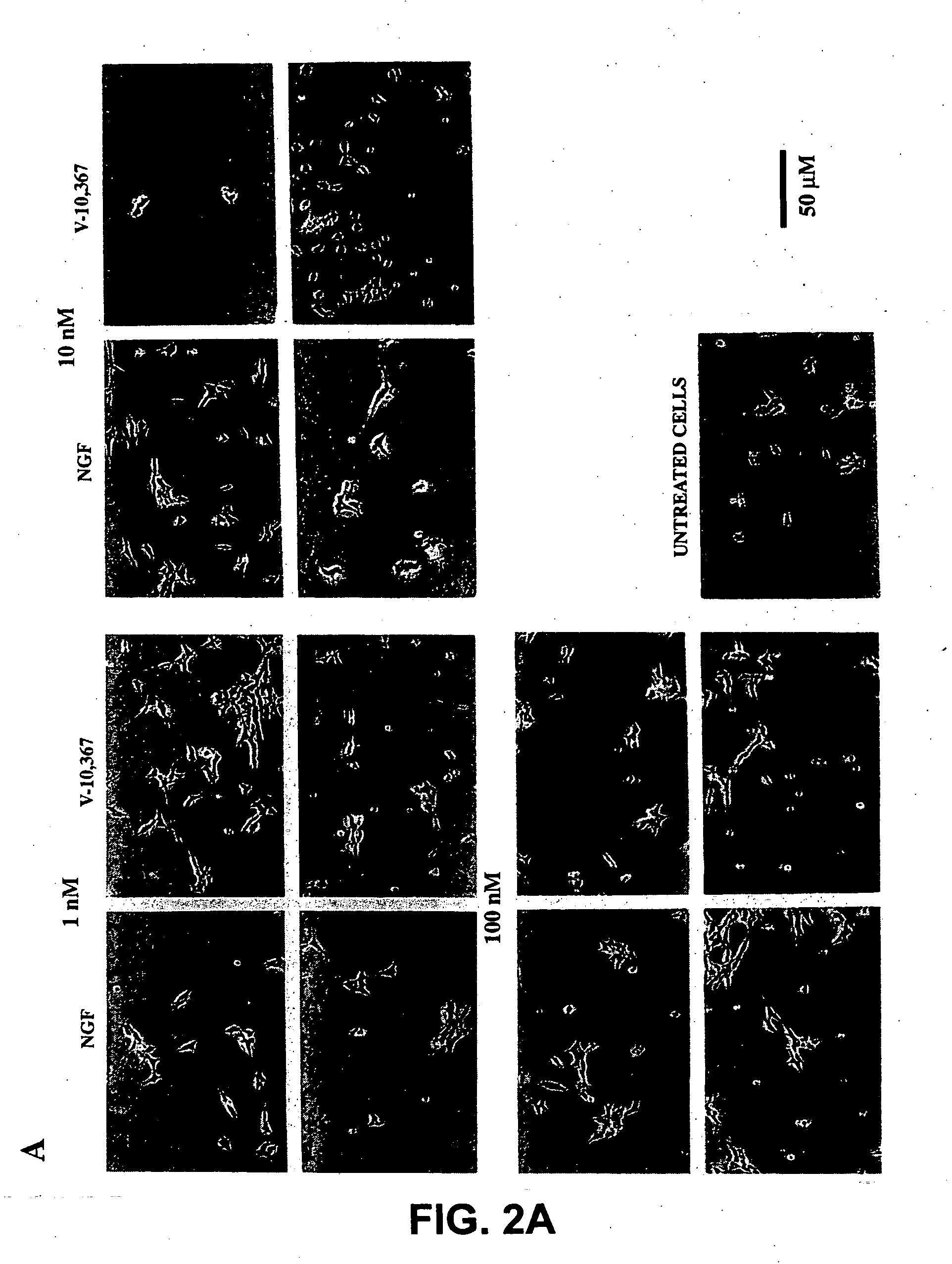Compositions and methods for promoting nerve regeneration
a nerve regeneration and composition technology, applied in the direction of biocide, peptide/protein ingredients, instruments, etc., can solve the problem of slow rate of axonal elongation (3-4 mm/day), and achieve the effect of stimulating nerve cell growth and stimulating nerve cell growth
- Summary
- Abstract
- Description
- Claims
- Application Information
AI Technical Summary
Benefits of technology
Problems solved by technology
Method used
Image
Examples
example 1
[0105] A Non-Immunosuppressant FKBP-12 Ligand Increases Nerve Regeneration Materials and Methods
[0106] Cell cultures. SH-SY5Y human neuroblastoma cells were maintained in DMEM medium (GIBCO) supplemented with 10% fetal calf serum (SIGMA), 50 IU>mL penicillin, and 50 mg / ml streptomycin (GIBCO) at 37° C. in 7% CO2. Cells were plated in six-well plates at 1×106 cells / well and treated with 0.4 mM aphidicolin (SIGMA). At five days, cells were washed, treated with nerve growth factor (NGF) (Boehringer Mannheim, Indianapolis, Ind.) at 10 ng / mL (to induce process outgrowth) in the presence or absence of V-10,367 (1, 10, or 100 nM) (Armistead et al., Acta Cryst., D51: 522-528, 1995; FIG. 1). Media was changed at 96 hours and replaced with fresh media with or without the compounds (NGF and V-10,367) for an additional 72 hours (total time, 168 hours). All experiments were run in duplicate wells and repeated at least twice for reproducibility.
[0107] Light morphometry of neurite lengths. For a...
example 2
FK506 Analogs That Do Not Bind FKBP-12 Speed Nerve Regeneration in the Rat Sciatic Nerve
[0123] The immunosuppressant drug FK506 promotes nerve regeneration in rats following a sciatic nerve lesion in a dose-dependent fashion. Two lines of evidence indicate that the mechanism for the promotion of nerve regeneration is distinct from that producing immunosuppression. First, while the immunosuppressant drugs FK506 and cyclosporin A inhibit T-cell proliferation via a common mechanism, namely calcineurin inhibition following binding to their respective binding proteins, the peptidyl prolyl isomerases FKBP-12 and cyclophilin A, cyclosporin A does not increase nerve regeneration. Second, the potent FKBP-12 inhibitor V-10,367, which lacks the structural components of FK506 that are required for calcineurin inhibition also speeds nerve regeneration. Thus, the immunosuppressant and nerve regenerative properties of FKBP-12 ligands are separable, the latter activity not involving calcineurin in...
PUM
| Property | Measurement | Unit |
|---|---|---|
| molecular weights | aaaaa | aaaaa |
| total time | aaaaa | aaaaa |
| total time | aaaaa | aaaaa |
Abstract
Description
Claims
Application Information
 Login to View More
Login to View More - R&D
- Intellectual Property
- Life Sciences
- Materials
- Tech Scout
- Unparalleled Data Quality
- Higher Quality Content
- 60% Fewer Hallucinations
Browse by: Latest US Patents, China's latest patents, Technical Efficacy Thesaurus, Application Domain, Technology Topic, Popular Technical Reports.
© 2025 PatSnap. All rights reserved.Legal|Privacy policy|Modern Slavery Act Transparency Statement|Sitemap|About US| Contact US: help@patsnap.com



